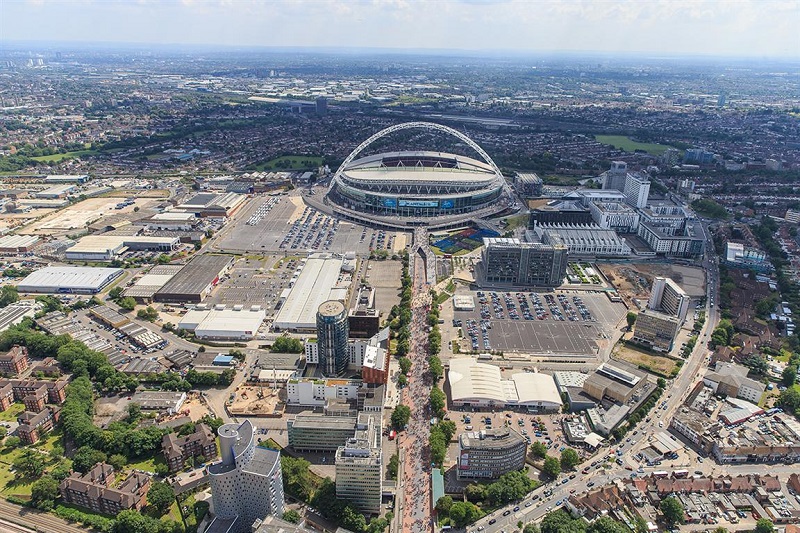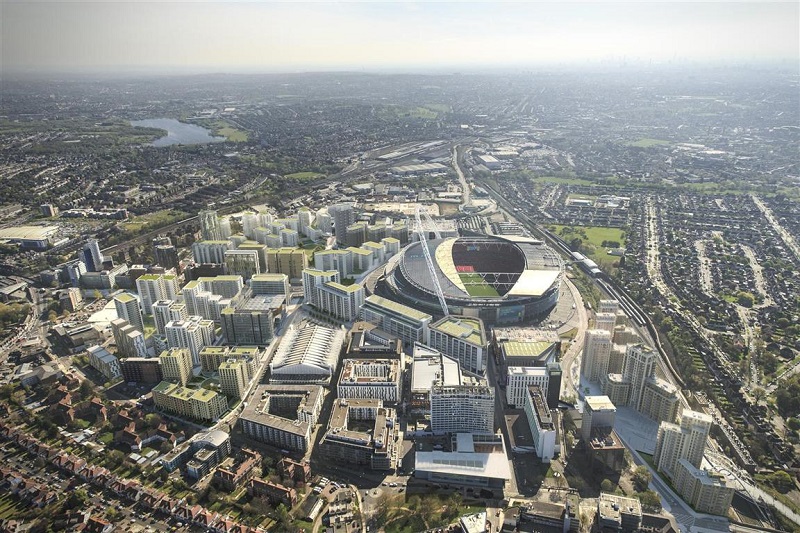How to commission architectural photography
Contents |
[edit] Introduction
An architectural photographer is someone who takes photographs of structures and buildings in a professional capacity. Their photographs are often intended for commercial purposes, for the developer to publish online or in brochures, or for the architect's portfolio.
There are a number of things to consider when commission architectural photography.
[edit] Finding a photographer
Photographers have different styles and it is important to do your research before committing to an individual.
Photographers are usually commissioned through:
- Recommendations from peers.
- Researching competitors' work.
- Research on social media and through books and news pages for great images.
- Photography fairs - such as #photlondon16.
[edit] Stylistic considerations
- The size of the field – some photographers excel at wide open shots, others at detail.
- The depth of field, the use of focus – both affect how stylised or natural the image will look.
- The perspective of the images – images taken at eye level, or at an angle feel very different.
- Colour – the intensity and colour style preferred by both parties.
- The inclusion of people in shots – architects have traditionally excluded people to focus on the building, but styles are changing.
- Format – landscape is more adaptable for reproduction and for use on social media.
- Other options - there is an increasing demand for stop motion photography of construction progress and the creation of short films for platforms such as YouTube.
[edit] The brief
It is important to set out the nature of the commission in writing to avoid possible confusion or disputes.
A detailed brief (with visual examples) should be prepared to help the client explain the look and a feel for of the required images required.
The brief should outline:
- The objectives of the shoot.
- A detailed shot list, from elevations to details, if possibly specify what should be included and/or excluded from images.
- The number of shots required.
- Any post-production requirements – whether the shots should be touched up if required, or whether the client will undertake this later.
- Timings – there may be particular events that need to be recorded, and this may include off site events, such as the manufacturing of key components. If several visits are required, the location of the photographer and how much travelling will be involved may become a consideration. Some clients want dramatic evening shots, others a range of light.
- Time for images to be handed over, size of files, method of transfer.
- Permission issues – what rights will the photographer grant for future use? It is essential to agree rights up front, if a photographer is embarking on a long-term partnership with a company they will be more likely to agree favourable usage rights.Consider including digital (website/social media) presentations, print and possibly hoarding, bill boards, advertising.
- A client may agree to credit to a photographer (on a corporate website and in social media) depending on the company policy.
[edit] Practicalities
- Check that the photographer has Public Liability insurance.
- The photographer may need to prepare a Risk Assessment.
- Is any of the space/land that will be used or accessed private? If so, permission may be needed.
- Does the shoot need to be at a particular time of day? Early morning or late evening shots can be more awkward to set up, but more visually dramatic.
- If the images are to include people they may need to sign release forms. If an identifiable individual is going to be shown in the image permission will need to be sought from the individual. If the photographic files will be held on your system this will need to be identified in the form.
[edit] Suggested wording for release form
'I grant xx permission to use the photograph/film taken of me/of my child.
I agree to:
- This data being stored or used for marketing or publicity.
- Storing copies of the photograph/film or storing my contact details on its database in case xx needs to contact me.'
[edit] Test shoot
Some companies commission photographers to undertake a 'test day' so they can review a sample of the photographer's work to confirm that the photographer understands the creative brief before embarking on a long-term commission.
[edit] Aerial imagery
Depending on the building/space being photographed, it may be useful to commission aerial shots. Some companies fly helicopters over cities on a regular basis, and a practice can simply buy a slot in their flight. It is important for the brief to be extremely specific and for you to agree a time of day and conditions.
Some flights are organised at the last moment depending on the weather so it can be of value to have thought through and written down the angles, distances and amount of backdrop required.
Increasingly, drones are used for photography, but operating regulations must be followed. See Construction Drones for more information.
Good aerial photography can provide interesting and unique perspectives on a building depending on the angles used. See example images below of Wembley Park by High Level Photography Ltd.
[edit] Related articles on Designing Buildings
- 3D animation for insurance risk analysis.
- Anthony Weller - Architectural photographer.
- Architectural photography.
- Architectural publishing.
- Building information modelling.
- CIOB holds the Art of Building photo contest.
- Computer aided design CAD.
- Construction cameras.
- Digital mapping and cartography.
- Grant Smith - Architectural photographer.
- Interview with Paul Grundy - Architectural Photographer.
- Layer.
- Photographing buildings.
- Photographing Historic Buildings.
- Simon Kennedy - Architectural Photographer.
- Skyscrapers, staircases and optical illusions - the Art of Building is back.
- Using publishing to optimise real estate projects.
Featured articles and news
The history of building regulations
A story of belated action in response to crisis.
Moisture, fire safety and emerging trends in living walls
How wet is your wall?
Current policy explained and newly published consultation by the UK and Welsh Governments.
British architecture 1919–39. Book review.
Conservation of listed prefabs in Moseley.
Energy industry calls for urgent reform.
Heritage staff wellbeing at work survey.
A five minute introduction.
50th Golden anniversary ECA Edmundson apprentice award
Showcasing the very best electrotechnical and engineering services for half a century.
Welsh government consults on HRBs and reg changes
Seeking feedback on a new regulatory regime and a broad range of issues.
CIOB Client Guide (2nd edition) March 2025
Free download covering statutory dutyholder roles under the Building Safety Act and much more.
AI and automation in 3D modelling and spatial design
Can almost half of design development tasks be automated?
Minister quizzed, as responsibility transfers to MHCLG and BSR publishes new building control guidance.
UK environmental regulations reform 2025
Amid wider new approaches to ensure regulators and regulation support growth.
The maintenance challenge of tenements.
BSRIA Statutory Compliance Inspection Checklist
BG80/2025 now significantly updated to include requirements related to important changes in legislation.


























